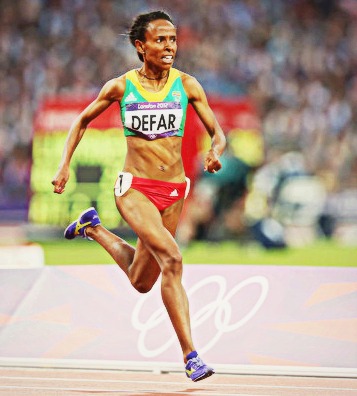Smaller vertical displacement allows for both low impact and mechanical work in forefoot running as compared with heel strike running.

Less Impact and Mechanical Work in Forefoot Running
Forefoot Strike Vs Heel Strike
Because of its effects on the vertical displacement of the center mass (bouncing while running), a forefoot strike landing when running is the original vehicle for low mechanical costs.
In a forefoot strike, a smaller vertical displacement of the center mass reduces mechanical costs and impact shock as compared with heel strike running, suggesting that heel strike runners may overwork themselves and get injured.
Indeed, most runners bounce when they run. However, heel strike running causes excessive bouncing which wastes energy. By comparison, elite runners, most of which are non-heel strikers, have considerably less vertical displacement of the center of mass than most joggers who heel strike. A higher step rate also allows elite runners to have less bounce, suggesting that elite runners have quick limb displacement speed around the center of mass. Therefore, you may need to jack up your cadence to gain more efficiency.

In addition to step rate being higher in forefoot running, the lower extremities are also more flexy and bendy which helps minimize the vertical displacement of the center of mass. Because of this, forefoot runners are more proficient at minimizing mechanical costs than heel strike runners.
- This revelation was confirmed by Slawinski and Billat (2004) who found that runners with the greatest vertical displacement of the center of mass had the weakness limb displacement speed around the center of mass, which resulted in higher mechanical costs.
- This means that runners who have slower leg-swing action (i.e. lower stride rate) have greater, mechanical bounce during running.
The researchers compared the mechanical and energy costs for three groups of runners with different levels of training (well-trained, average, non-trained runners). The researchers found that well-trained runners had less vertical displacement of the center of mass, a higher stride rate and had less potential mechanical cost as compared with the other groups.
As for impact reduction, a smaller vertical height of the center of mass during the flight phase of running reduces impact shock when the foot strikes the ground (Farley and Gonzales). Their findings add evidence to the theory that forefoot running is the root of performance and impact protection optimization.
- The researchers believe that limiting fluctuations in the vertical displacement of the center of mass may be a self-optimizing mechanism to soothe body-ground interactions during the early portion of the support phase.
Overall, forefoot running naturally increasing step rate and lessens vertical bounce which could help ease high impact landings in runners who struggle with pain and injury.
More From Run Forefoot:
- Forefoot Running and Injury Prevention
- Remember to Land Lightly
- Better Knee Function with Forefoot Running
- Reviews on Forefoot Footwear
- Body Needs Tactile Stimulation to Run Properly
Be sure to head on over to the Run Forefoot Facebook Page, it’s a great place to ask questions about forefoot running and other related topics. I’d be happy to answer them for ya!
References:
Farely , C., and O. Gonzalez . Leg stiffness and stride frequency in human running. J. Biomech. 29:181–186, 1996.
Slawinski JS and Billat VL. Difference between mechanical and energy cost between highly, well and non-trained runners. Med Sci Sports Exerc, 2004; 36(8):1440-1446.
Bretta Riches
BSc Neurobiology; MSc Biomechanics candidate, ultra minimalist runner & founder of RunForefoot. I was a heel striker, always injured. I was inspired by the great Tirunesh Dibaba to try forefoot running. Now, I'm injury free. This is why I launched Run Forefoot, to advocate the health & performance benefits of forefoot running and to raise awareness on the dangers of heel striking, because the world needs to know.
Latest posts by Bretta Riches (see all)
- Heel Strike Running Causes Slipped Discs - 25/04/2024
- How to Train Yourself to Not Heel Strike When Running - 24/04/2024
- Cushioned Running Shoes Found to Be Bad for Ankles - 23/04/2024

Leave a Reply